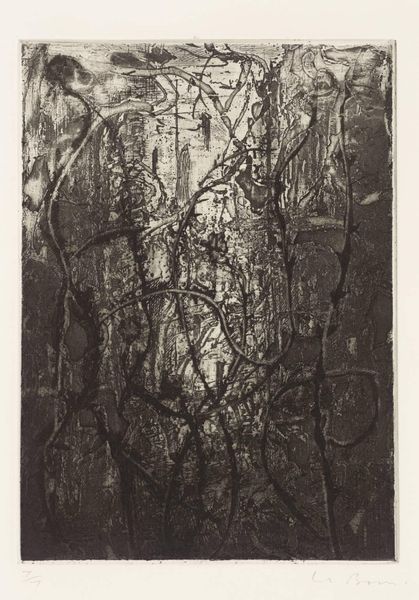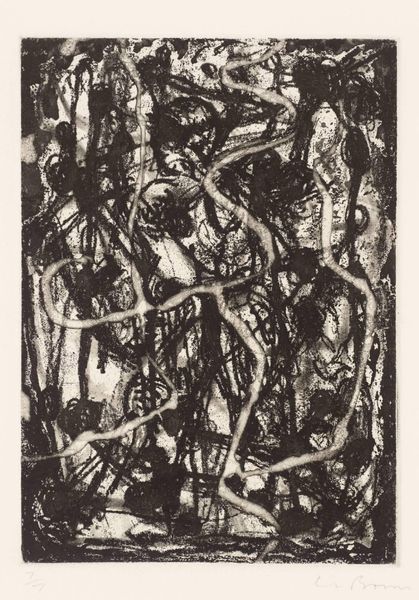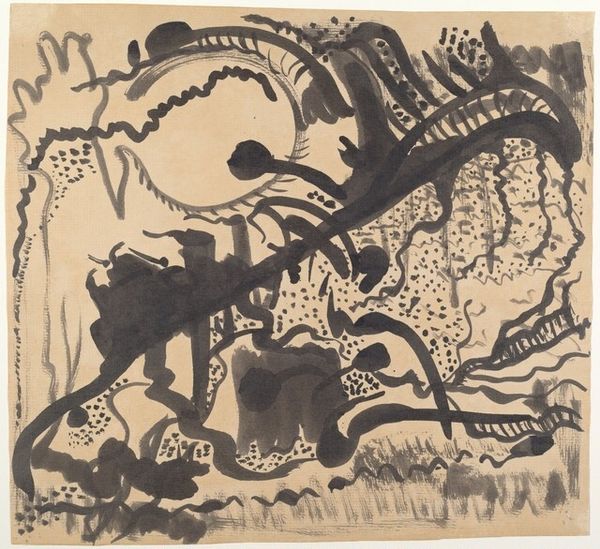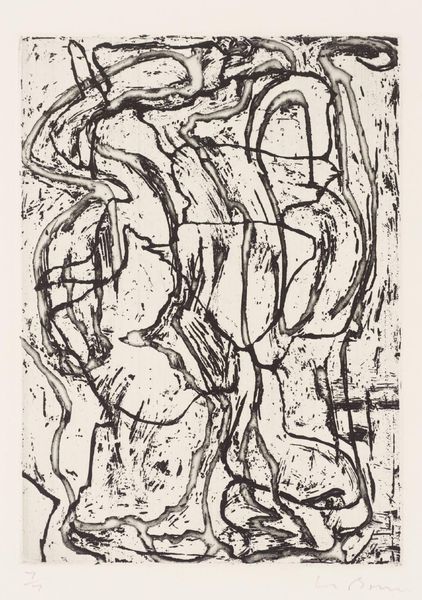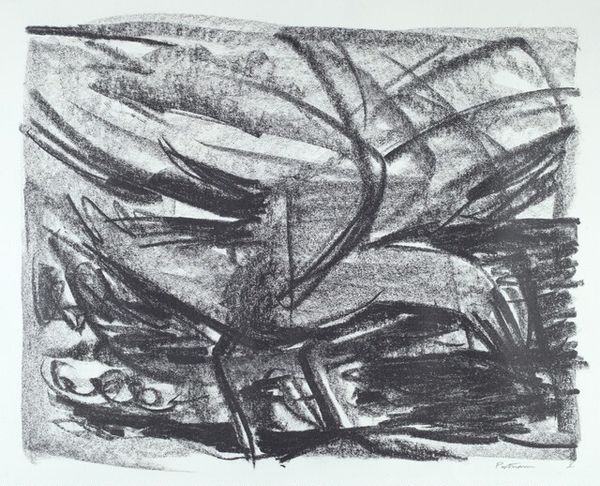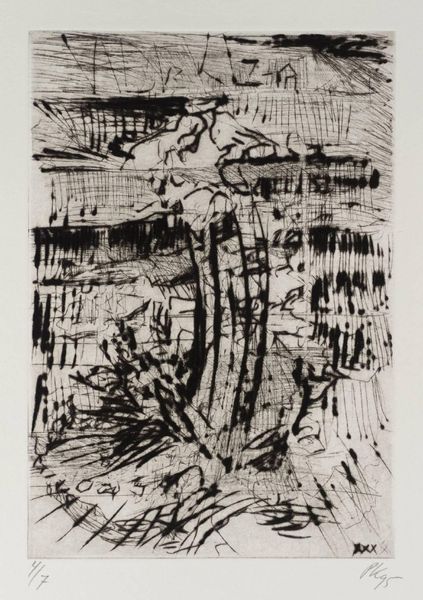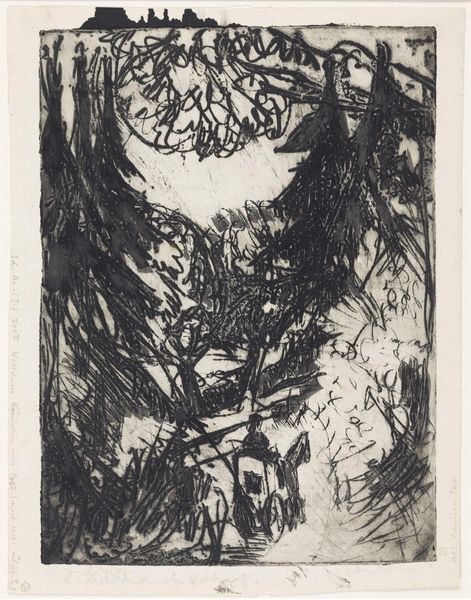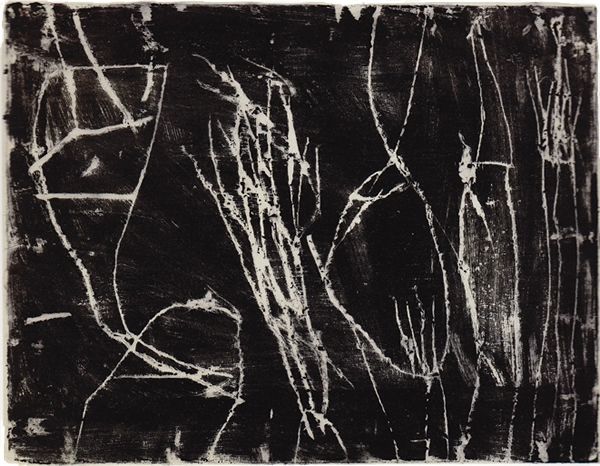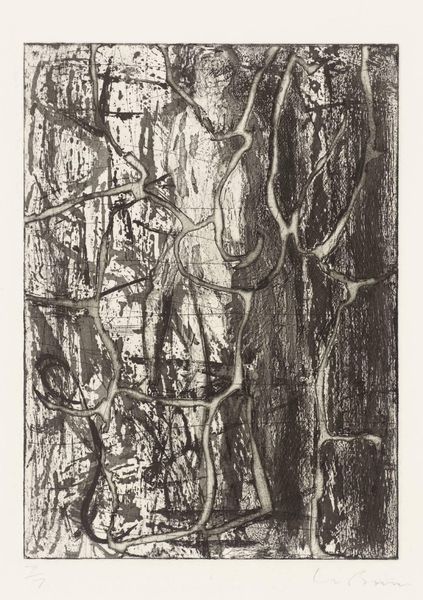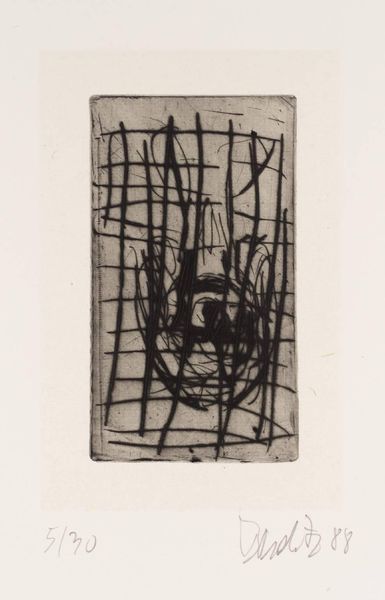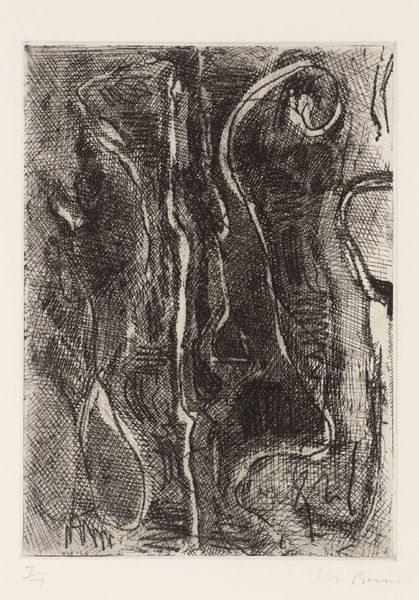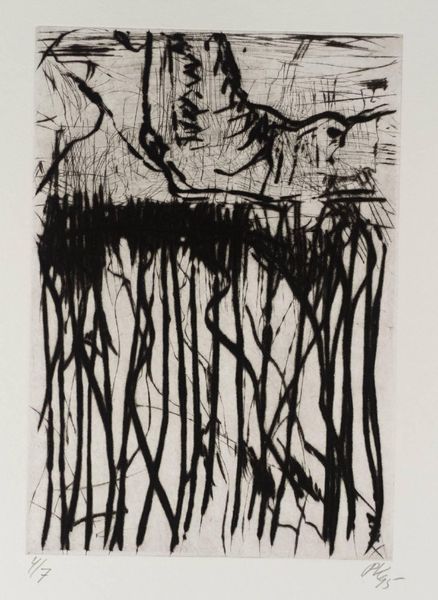
#
abstract painting
#
ink painting
# print
#
possibly oil pastel
#
handmade artwork painting
#
fluid art
#
acrylic on canvas
#
watercolour bleed
#
watercolour illustration
#
mixed medium
#
watercolor
Dimensions: Sheet: 205 x 194 Plate: 181 x 173
Copyright: National Gallery of Art: CC0 1.0
Garner Tullis made Fragment The Fly using the intaglio technique, a printmaking process with roots in the 15th century. Looking at this seemingly abstract image we might ask ourselves questions about the public role of art. What are the politics of imagery here? What are the social conditions that shaped its production? In abstract art, the image creates meaning not through direct representation, but through visual codes, cultural references, and historical associations. Though this work could have been made anywhere in the world, the artist was working in California at a time when many artists were experimenting with new media and modes of expression. What could this choice of image and abstraction mean? As historians, we are interested in looking beyond the surface to the social and institutional contexts. We consider how the institutions of art – galleries, museums, schools – influence both the creation and reception of art. By examining the artist's life, their social environment, and the artistic movements of their time, we gain a deeper appreciation for the meaning of the artwork and the artist’s social and artistic choices.
Comments
No comments
Be the first to comment and join the conversation on the ultimate creative platform.
